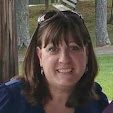Who doesn't like FREE resources? Especially those of us in education who are used to not only purchasing resources but purchasing them OURSELVES! (Am I right?)
Friday, February 26, 2021
(FREE) RESOURCE ALERT! The Change Agent
Saturday, February 20, 2021
What Does it Mean to be a Multicultural Educator?
While a good definition of multicultural education is simply, “Multicultural education incorporates the idea that all students - regardless of their gender, sexual orientation, social class, and ethnic, racial, or cultural characteristics - should have an equal opportunity to learn in school,” (Banks, p. 3) all that those words entail are complex.
Banks, J. & McGee Banks, C. (Eds.) (2016).
Multicultural education: Issues and
perspectives. Hoboken, NJ: Wiley.
Lee, E., Menkaret, D. & Okazawa-Rey, M.
(1998). Beyond Heroes and Holidays: A Practical Guide to K-12 Anti-Racist,
Multicultural Education and Staff Development. Washington, D.C.: Teaching for
Change.
Wednesday, February 17, 2021
Adverse Childhood Experiences (ACES) and Adult Learners
One-third of adult learners have been impacted by childhood trauma. (Perry, 2006) It might include a parent that was addicted to drugs or alcohol, domestic violence, incarceration, poverty, family illness, mental health issues and the list goes on.
Here is a fantastic article on the subject:
And here is the CDC website with original research data:
Wednesday, February 10, 2021
RESOURCE ALERT! Teaching Adults
I ran across this article from Stanford University entitled, "A Dozen Things You Need to Know About Adult Learning." It is an excerpt from the book Teaching Adults: A Practical Guide for New Teachers, by Ralph G. Brocket. (I think I may need to purchase this book!). It has some very good points. Check it out!
Monday, February 8, 2021
Paradigms in Learning
I also believe that teaching goes way beyond facts, theorems, and output. We are shaping students into the best citizens and human beings they can be and no one theory teaches us the best way to do that. We celebrated Dr. Martin Luther King, Jr. this week and one of my favorite quotes of his is, "The function of education is to teach one to think intensively and to think critically. Intelligence plus character - that is the goal of true education." Our theories and classroom practices must combine ways to advance a student both intellectually and personally or we are not fulfilling our calling, in my opinion. And yes, I do think teaching is a calling. It is my life’s’ purpose and I hope you feel the same.
Sunday, February 7, 2021
Funds of Knowledge
Some questions to ask regarding the video and FOK (from HomeworkMarket):
*What internal factors influenced Caine’s ability to successfully create his arcade? Consider his worldview, values, and funds of knowledge as internal factors.
*How valuable do you think these skills are in the real world?
Saturday, February 6, 2021
Welcome to the Box!
Welcome! This space will serve as a tool for Adult Education faculty to brainstorm and collaborate. It will also be a blog of topics relating to AED, no matter how difficult, a place and space to discuss honestly and openly issues that face and affect our students.





